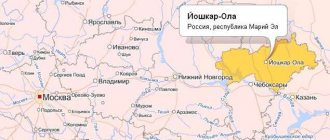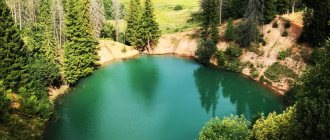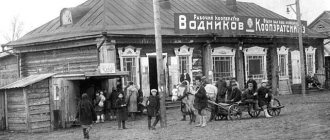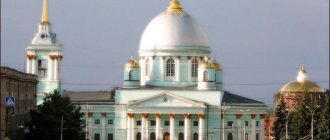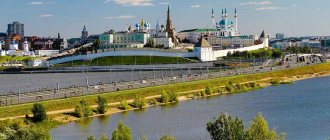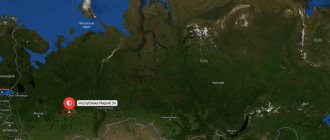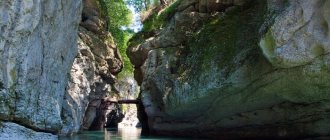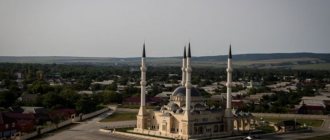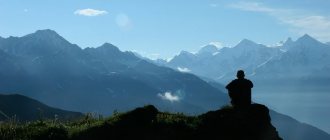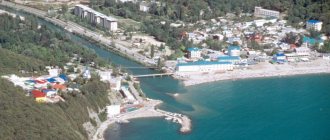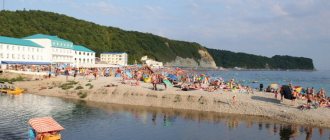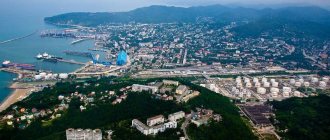The Republic of Mari El is one of the most environmentally friendly regions of Russia. The territory of the republic is located on the border of the steppe and forest-steppe zones. Fifty-seven percent of the territory is mixed forests. Thanks to the wonderful environmental conditions, a rich fauna has been preserved on the territory of Mari El.
The Mari region is a fabulous landscape, a haven of silence, a place with a rich flora, as well as a kingdom of animals and birds. The nature of the republic amazes with its splendor and richness.
With its landscapes, Mari El resembles the nature of the Alps. There are also many rivers, lakes and protected forests.
Summer rest
Small in size, but very original, the republic offers its guests various types of summer recreation.
Fans of active recreation can use one of the tourist routes:
| Name | Places to visit | Duration |
| 3 republics | From Yoshkar-Ola to Kazan and Cheboksary | 3 days |
| Wonders of the Mari land | From Yoshkar-Ola to Kozmodemyansk and back | 2 days |
| Maple Mountain | Hiking route in the Mari Chodra National Park | 2-3 days with accommodation |
| Bolshaya Kokshaga Nature Reserve | Walking around the reserve | 2-3 days |
Those wishing to relax and improve their health can take advantage of the lake, located in a coniferous forest on the shore of the lake. Shap. Here you can use sports grounds, ride boats, catamarans, play billiards, and table tennis.
Fishing lovers can go to the Razdolye tourist complex, which is located in the untouched taiga. It is also a good place to relax with children.
In the village Kokshaysk on the Volga bank among the pine trees is located the Aeroflotets recreation center. Wooden houses and cottages are available for guests. You can use the Russian bathhouse and sauna. A special playground has been organized for children.
Winter holidays
Conditions for winter recreation in the republic have been created. An active recreation center has been opened in Yoshkar-Ola, offering skiing to everyone. In the village of Korty, not far from the capital, there is a training base where professional athletes are trained. Here residents and guests have the opportunity to go skiing.
Winter fishing is organized on numerous lakes of the republic. Enthusiasts of this activity even hold winter fishing competitions. Numerous recreation centers and hotel complexes are ready to receive vacationers all year round.
Sights photos
Modern Yoshkar-Ola is a beautiful, rapidly developing, constantly changing city.
Mari El photo. New center of Yoshkar-Ola - Obolensky-Nogotkov Square:
The National Gallery of Art, an Italian-style building, administrative buildings and a shopping complex are located here. In the center of the square is a monument to voivode Ivan Obolensky-Nogotkov, the founder of Yoshkar-Ola
The Tsarevokokshay Kremlin has been restored and rebuilt, Cathedrals, monuments, beautiful embankments are decorated with new buildings, the city has landscaped pedestrian areas, boulevards, squares with fountains, a lot of greenery, wonderful places to relax. The city has many museums - history, fine arts, folk and applied arts; theaters: Mari State Opera and Ballet Theater named after. Erika Salaeva, Mari Republican Puppet Theater, Academic Russian Drama Theater of Georgy Konstantinov.
Mari National Drama Theater named after M. Shketan:
In the capital Yoshkar-Ola, much attention is paid to sports. For sports and large sporting events in the capital there are two Ice Palaces, two Water Palaces, and a large tennis court.
Religious sites
In Mari El, along with the predominant Orthodoxy, paganism, which is the traditional Mari religion, has been preserved and operates. The Mari's belief in supernatural forces and their reverence for the sky, the Sun, the Moon, stars, and natural phenomena formed certain traditions, rituals, and ethical standards.
Local residents are very tolerant of other religions. For the Mari, all people, regardless of nationality and religious affiliation, are part of the Cosmos, therefore everyone is equal and worthy of respect. Religious rituals are carried out in sacred places - groves according to the traditional calendar.
Religious sites:
- The Mother of God of St. Sergius Hermitage. In the Kilemar region of the republic, near the Rutka River, almost directly in the taiga, this Orthodox monastery is located. Since 1999 it has been a men's monastery, and since 1888 there has been a Cheremis women's monastery on this site. Wooden beams and logs were used to construct all the buildings of the monastery. Construction was carried out according to the unwritten laws of Russian wooden architecture. The community is small, no more than 12 monks live there. To organize a pilgrimage trip, prior arrangement is required by phone. 8(83643)-2-52-02.
- Michael the Archangel Monastery. Located in the Gornomari region in the west of Mari El, the monastery was founded in the second half of the 19th century. The founders of the monastery, located on the coast of the Sura River, were local Mari peasants who, having received permission from church ministers, became hermits. Over time, the small monastery turned into a monastery, which was built in 1871 with donations from the local population. Having become a center for the dissemination of spiritual knowledge among the Volga region population, the monastery opened within its walls a one-of-a-kind comprehensive school, where more than 700 teenagers studied over the course of 20 years. In the 20s of the XX century. the monastery was closed and partially destroyed. Now the monastery is being restored.
- Yezhov Myrrh-Bearing Monastery. 15 km northeast of the capital Mari El in the Medvedevsky district is the Yezhov Myrrh-Bearing Monastery, founded in 1649. It was erected on the site where the miraculous image of the Myrrh-Bearing Women appeared to a local peasant. The monastery was built in accordance with the best traditions of Russian Orthodox architecture. It is located next to the holy spring. A wooden church built in the mid-17th century. by the beginning of the 18th century. replaced with stone. Now there are 2 churches in the monastery - the upper one, in which services are held in the warm season, and the lower one, warm, where services are held in the winter.
- Annunciation Cathedral in Yoshkar-Ola. In the capital of Mari El, on Republic Square, there is the Annunciation Cathedral, which was built at the expense of local parishioners. The consecration of the temple took place in 2016. The architecture of the cathedral is cross-domed, with a bell tower on the north side. The temple is large, 2000 people can be there at the same time. Mosaic panels are placed on the facades of the temple, and sculptural compositions of spiritual content are located at the entrance. Morning and evening services are held daily in the cathedral.
- Cathedral of the Resurrection of Christ in Yoshkar-Ola. On Voskresenskaya street. Yoshkar-Ola is the Cathedral of the Resurrection of Christ. This stone temple was erected in 1759 with donations from the population of Tsarevokokshaisk, as the city was then called. A merchant from Kazan, V.F. Bulygin, made a great contribution to the construction. On the south-eastern side of the temple there was a bell tower, consisting of 4 tiers, with 6 bells. With the establishment of Soviet power, the cathedral did not cease its activities, becoming the center of Orthodoxy in the area. But in 1928, by decision of local authorities, the temple was closed, and the building was used as a cinema.
Believers repeatedly petitioned to return the building to the Russian Orthodox Church, and in 1944 the request was granted. The partially destroyed building was repaired using the efforts and resources of the parishioners, and divine services were held there for about 20 years. In the 60s of the XX century. The authorities of the republic decided to demolish the cathedral. Despite protests from parishioners, the building was destroyed.
In the 2000s, the revival of the temple began. First, a worship cross was erected on the site of the destroyed cathedral, and then a temple was built. Now the church holds morning and evening services from Wednesday to Sunday. Twice a month (Thursday of the 2nd week and Saturday of the 4th week of the month) prayer services are organized for women preparing to become mothers.
Mari El Gornomarisky district
One of 14 districts, located in the southwestern part of the republic on the right and left banks of the Volga, occupies the northern outskirts of the Volga Upland. The Sura, Sumka, Yunga, Malaya Yunga, and Sundyr rivers flow through the Gornomariysky region, flowing into the Volga.
The meadow side of the area on the left bank of the Volga is the flat part of the area. There are many forests, lakes and rivers that carry their waters to the Volga.
The mountainous side of the region is located on the right bank of the Volga - this is a vast hill. There is a hilly area, cut by rivers and ravines.
The population of the Gornomarisky district is 23,027 people, the territory is 1,716.2 square meters. km. The administrative center is the city of Kozmodemyansk of republican subordination, which was founded in 1583 as a fortified city.
In Kozmodemyansk there is the most beautiful Cathedral of the Smolensk Icon of the Mother of God:
In the Gornomarisky district there is a monument to Akpars, the Gornomari national hero:
Not far from the monument lies a large stone on which the words are carved:
“For every person, the place where he was born, his father’s house, seems to be the center of the entire universe. And the whole world revolves around him. For the Mountain Mari, this is a mountainous region, the land of Akpars. This intersection is the geographical center of the Gornomari region...
When setting off on a long journey, touch this stone and wish yourself good luck on your journey to distant lands. And the gravity of the mountainous land will help you return to your native land.”
The sundial shows true local time:
You can learn about the purpose and structure of a sundial from the sign with the inscription installed on the watch dial:
Museums
The sights of the Mari people serve as the heritage of the Republic of Mari El. In national and ethnographic museums, which are the majority here, the history of the people, their way of life and culture are carefully preserved and passed on to descendants.
Scroll:
- Museum of Folk Applied Arts. In Yoshkar-Ola on the street. Chernyshevsky there is a one-story wooden building with a classic mezzanine, built in 1907. The owner of the house, decorated with traditional Mari carvings, was the contractor of the Zemstvo Administration of Tsarevokokshaisk P. Lokhanov. Since 1999, this building has housed a museum of folk and applied arts. The museum's exhibitions reflect the history of the development of traditional Mari crafts from the late 19th century to the early 20th century. The products of coopers, joiners, carpenters, made of wood and birch bark using weaving and carving are presented. Part of the museum's halls is occupied by an exhibition of folk craftsman, sculptor, and woodcarver F. Shaberdin. The museum is open from Tuesday to Saturday from 9 a.m. to 5 p.m. Detailed information on ticket prices can be obtained by calling. (8362)349041.
- Ethnocultural complex "Shorunzha". In the village of Shorunzha, located in the Morkinsky district, an unusual museum opened in 2015. The appearance of the museum complex became a landmark event for the Mari village, which preserved the ancient traditions of life and life of the local people. The complex, called the “Old Estate,” immerses visitors in the distant past. The national clothes of the village residents, the ancient forgotten dialect, the hard work of the local population, who work in the fields and engage in traditional crafts, create the illusion of being in 3 planes at once - past, present and future. The village and museum form a single complex, which is an oasis of preserved pagan heritage. Residents still honor the traditions of past times. The most significant figure is considered to be the ancient hero Onar, glorified in epics. Not far from the museum there is a monument to the national hero, the defender of local lands - a huge stone. Nearby is the Yanyk-Pamash spring with the purest water. The main Deity is nature, which they worship and strive to live according to its laws. There are sacred groves where services are held. In addition to a tour of the “Old Estate”, where tourists are introduced to ethnographic and archaeological exhibits, you can treat yourself to local dishes, try herbal tea from a samovar, and try on Mari national costumes. The museum is open on weekdays from 8 a.m. to 5 p.m. Ticket prices can be clarified by calling. 7 (987) 705-47-63. Discounts are provided for pensioners, veterans, organized groups of tourists, and birthday people.
- Ethnographic Open Air Museum named after. Romanova V.I. On the street In the industrial town of Kozmodemyansk there is an ethnographic museum, which was created in the 80s of the 20th century. Kozmodemyansk, located on the high bank of the Volga, was founded in 1583 by Ivan IV and named after the brothers Kozma and Domian, who were engaged in healing. The main exhibition of the museum includes wooden buildings of the inhabitants of the Mari village. These Mari buildings were transported from the area that was subject to flooding during the construction of the Cheboksary hydroelectric power station. The Ethnographic Museum is the only institution whose exhibitions are dedicated to the ethnology of national minorities. The uniqueness and uniqueness of the buildings is given by the carvings that decorate the wooden buildings, as well as traditional touches of Mari art. The museum's signature exhibit is the windmill, which is in working order. Objects such as a well-crane, a fence, and a cart with wooden wheels, long forgotten by modern people, arouse increased interest among visitors. The decoration of the museum can be called the estate of a wealthy peasant, where the interiors of that time have been restored and national costumes are presented. You can visit the ethnographic museum every day, except Mondays, from 9 a.m. to 5 p.m.
- Tsarevokokshay Kremlin. The Tsarevokokshay Kremlin in Yoshkar-Ola is the youngest building of its kind. The Tsar's Castle on Kokshaga was founded in 1584 by decree of Tsar Fyodor Ioanovich as a defensive structure. A wooden fortress was built in which the military lived. Later it was settled by traders, peasants and artisans, becoming the city of Tsarekokshaysk. In 2009, on Revolution Square, where the fortress previously stood, the construction of the Tsarevokokshay Kremlin, stylized as a fortress of previous years, was completed. The architectural complex includes a fortress wall with 4 towers, the Resurrection Cathedral, a monument to the founder of the city Fyodor Ioanovich, and an archeology museum. Rare photographs of bygone days and booklets telling about the formation of the city are posted on information stands. At the permanent exhibition “The Tale of the Tsar’s City” you can get acquainted with the stages of development in the 16th – 20th centuries. Artillery guns, which were made according to ancient drawings, are installed along the walls. The complex is open from Monday to Friday from 8.30 to 17.30. For preferential categories of the population, tickets start from 100 rubles.
- Sheremetev Castle in Yurino. The village of Yurino, formerly the village of Arkhangelskoye, is located on the Volga, between Kozmodemyansk and Vasilsursk. The main attraction of the village is the palace and park ensemble, built in the medieval style. The Archangel Michael Cathedral, built in the 20th century, which is located near the castle, also attracts attention. The castle was built by General V.S. Sheremetev at the end of the 18th century. He was an active and practical man and therefore created a large estate. The appearance of the highlight of the manor-castle is presentable. The restored building, which mixes different styles - Western European, Eastern, Old Russian, looks wonderful. The interior decoration has been completely preserved only in a few rooms. In many rooms, only fragments of former luxury and rare surviving details have been preserved, but the guide’s story helps to get a complete picture of the past. Therefore, it is better to order a guide. The staff of the estate has developed several excursion directions. Cost of visit: from 300 to 500 rubles.
The Sheremetev Castle has hotel rooms of various levels of comfort (economy, standard, luxury), where you can stay for several days. Information on availability, ordering excursions and booking rooms can be obtained by phone. (83644) 3-21-57.
Fauna of the Republic of Mari El
Forests, meadows, rivers, lakes and swamps are home to many different animals. More than forty species of fish live in the reservoirs, such as perch, pike perch, bream and many others. The amphibian world is represented by ten species of inhabitants - frogs, newts, toads. Six species of reptiles - viper, snake, spindle, copperhead. Here you can find two hundred and eighty species of birds - woodpeckers, tits, owls, cranes, eagles, goldfinches, herons and many others.
The Republic of Mari El is rich in mammals; there are about sixty species here. Among them are such representatives as wolf, fox, brown bear, lynx, elk, and bat. An equally large number of rodents are found here, for example, hares, beavers, squirrels, and muskrats.
The most frequently encountered representative of the animal world here is the elk.
It is not for nothing that the coat of arms of Mari El is decorated with the image of a moose - they have long been found in abundance in the Mari forests. And today their number in the republic is about 4 thousand.
Sculptures and monuments
Mari El, whose sights form the cultural heritage of the republic, is proud of its monuments and sculptures. Artifacts reflect significant historical dates and affect the spiritual development of society.
Scroll:
- Monument to Peter and Fevronia . In the capital of Mari El, on Patriarchal Square, a bronze monument to Prince Peter and Princess Fevronia was erected in 2010. The composition, created by sculptor A. Kovalchuk, is located next to a group of fountains. The figures of Peter and his wife are mounted on a low pedestal, with a small boat next to them. In the man's hand is a sheet with an inscription calling on spouses to love each other. Mari El has many monuments, such as Peter and Fevronia.
- Monument to Alexy II . On the river embankment Malaya Kokshaga in Yoshkar-Ola there is a statue of Patriarch Alexy II, who was the founder of the diocese of Mari El. The author of the monument is People's Artist of Russia A. Kovalchuk. The monument on which the Patriarch releases a white dove has become a symbol of spiritual purification and the triumph of good.
- Monument to the letter "Y". The symbol of the Mari capital was the monument to the letter “Y”, installed in Yoshkar-Ola on the street. Warriors-Internationalists. The author of the monument, installed in 2016, is local craftsman A. Kiselev. The letter was immortalized by order of the Antropov family. The artifact, about 1.5 m high, is made of pine, the stone pedestal of which is decorated with decorative forging.
- Monument to Yoshkin the cat . A bronze cat was installed in the center of Yoshkar-Ola in 2011. Sculptors A. Yandubaev, A. Shirnin and A. Shilov created their monument in honor of the capital. The Mari people often jokingly call their capital “Yoshka,” which is why “Yoshkin the Cat” appeared. On one of the benches in the park near the Mari State University there is a fairly well-fed cat, whose weight is almost 1.5 centners.
- Sundial . On the Voskresenskaya embankment of the capital of the republic, a sundial was installed in a small park in 2022. Despite the fact that the number of sunny days in the capital of the republic is not large, the sculpture receives well-deserved attention from citizens and tourists.
The artifact, located in a convenient location at the intersection of Arkhangelskaya Sloboda and the embankment, shows the exact time on sunny days. And in cloudy times you can take interesting photographs here.
Monuments in Yoshkar-Ola
The capital of the Republic of Mari El is an ancient city with rich cultural traditions, translated as “Red City”. Why red? Yes, because after the revolution Tsarevokokshaysk was renamed Krasnokokshaysk. And after the formation of the Mari Republic, Krasnokokshaysk was translated into the Mari language. Walking along the embankment of the Malaya Kokshagi River, you can admire the beautiful architecture, unexpectedly reminiscent of Flemish architecture in style. Today, the improvement of the city is in full swing, and the number of interesting places in Yoshkar-Ola is increasing every year.
Yoshkin cat
The bronze sculptural composition “Yoshkin the Cat” weighing 150 kg was installed on June 23, 2011 in the city center near the main building of the Mari State University. The authors of the unusual work were artists Sergei Yandubaev and Anatoly Shirnin.
Local graduate students have already come up with a new tradition - after receiving their diplomas, stroking the nose of “Yoshka’s cat”. The artists admit that it was not easy to find a suitable image. Alexey Shilov took more than a hundred photographs of stray cats during his work. But as a result, the prototype of “Yoshka’s cat” was the neighbor’s red one. The bronze sculpture was cast in Kazan. It is also known that funds for the production of the monument were provided by patrons. The government of Mari El explained that “Yoshkin Kot” is a private project, a gift to city residents from Moscow businessmen. By the way, officials from Yoshkar-Ola have patented the name “Yoshkin Kot” as a signature tourist brand of the city.
Yoshka's cat
On September 26, 2013, in Yoshkar-Ola, on Gagarin Avenue, a monument to Yoshkina the Cat was erected, very close to Yoshkina the Cat, which is located on Leninsky Prospect. The monument to Yoshkina the Cat was erected for the opening of one of the cafes in Yoshkar-Ola. The author of the project is Edgar Filippov. The official opening of the monument is October 15, 2013. In total, at least 5 sculptural compositions on a cat theme have already been installed in Yoshkar-Ola.
Monument to His Holiness Patriarch Alexy II
The monument by People's Artist of Russia Andrei Kovalchuk depicts the founder of the Yoshkar-Ola and Mari diocese, Alexy II, releasing a dove into the sky.
Sculptural composition "Lorenzo Di Piero De' Medici the Magnificent"
In Yoshkar-Ola there is an Italian Garden, its main attraction is the sculptural composition “Signor of Florence Lorenzo Medici the Magnificent”. The author of the monument is People's Artist of Russia Andrey Kovalchuk. The head of the Florentine Republic is depicted sitting on a throne. In his hands the book is a symbol of knowledge and wisdom. Behind the Medici is a muse that illuminates the poet and gives creative inspiration. Three principles are carved on the bas-relief - “The Glory of the Fatherland, the greatness of the family, the growth of the arts.” It was they who guided the Doge of Florence in all matters and never separated one from the other. “I want the whole republic to look the way the Virgin Mary Square, Patriarchal Square, and the embankment look today,” said the head of Mari El, Leonid Markelov, at the opening ceremony of the monument. — In every era, there were statesmen who set themselves the goal of transforming the world around them. The Renaissance, which the whole world admires today, also owes its beautiful cities to the lords who ruled in those days. Such a ruler was Lorenzo Medici, a brilliant politician and philanthropist. He not only supported art, he founded an academy that selected talent from ordinary people and trained great masters. I want Mari El to be like the Renaissance, and here the revival of the arts and traditions of philanthropy would take place. As a sign of this, we are opening the Italian Park, which was made without the participation of the state, exclusively at the expense of patrons.”
Monument to Obolensky-Nogotkov
The monument to the founder of Tsarevokokshaisk, governor Ivan Obolensky-Nogotkov in the capital of the Republic of Mari El was unveiled on May 8, 2007. The author of the monument is Moscow sculptor Andrei Kovalchuk. The height of the monument is about 6 meters, weight is more than 6 tons. As archival documents testify, Obolensky-Nogotkov came from the ancient princely family of Obolensky. The Nogotkovs are a princely family, a branch of the Obolensky princes, descended from Prince Andrei Nikitich Obolensky. As an experienced military man, Ivan Andreevich Obolensky-Nogotkov served in the sovereign service as a governor in Kazan (1576), Serpukhov (1579-1580). On July 27, 1580 he was moved to Kaluga. He took part in a number of military campaigns in the Volga region. In 1583-1584 he was the governor of Nizhny Novgorod. By the boyar decree of October 11, 1584 and by the decree of Tsar Fyodor Ioannovich of November 1, 1584, Ivan Obolensky-Nogotkov was appointed the first governor of the city of Tsarevokokshaisk. He held this position for about two years.
Monument-exposition “Lukomorye”
In Yoshkar-Ola, near the walls of the Kremlin, there is a monument to the literary heroes of Alexander Sergeevich Pushkin - “The Mermaid on the Branches and the Scientist Cat.” The author of the monument-exposition “Lukomorye” is Sergei Slesarev and the artist Gennady Efremov. On September 20, 2012, new characters appeared - Baba Yaga and Nightingale the Robber.
“I live nearby,” says the author of the Lukomorye monument-exhibition, Sergei Slesarev. — We always try to improve the house. And it was either the Kremlin that inspired me, or Pushkin, but I wanted to make a fairy tale. I asked the artist Gennady Efremov to help me, and together we made a mermaid and a cat out of wood. Our Little Mermaid looks like a Mari - this is no coincidence! The work lasted for a month.
Monument to Grace Kelly and Prince Rainier III of Monaco
The monument was erected near the new registry office on the Bruges Quay. At the opening of the new sculpture, the head of the Russian Museum of Music, Leonid Markelov, explained the somewhat unusual choice of the heroes of the composition. “Grace Kelly and Prince Rainier III of Monaco are the epitome of a married couple. In life you need to look up to someone, take an example. There is no place in the world more famous than Monaco. This married couple developed their state. I want Yoshkar-Ola to become the same as Monaco,” said Leonid Markelov. According to information from social movements, the installation of “Wedding of the Century” cost the budget 8 million rubles. The author of the monument is Andrey Kovalchuk.
Sculpture "Virgin Mary with the Child Christ"
The sculpture-icon of the Virgin Mary with the Child Christ in her arms was installed on the Square of the Blessed Virgin Mary next to the Theater Bridge on the eve of the Christian holiday - the Entry into the Temple of the Blessed Virgin Mary. The author of the sculpture of the Virgin Mary, People's Artist of Russia Andrei Kovalchuk, sculpted it in the traditions of the Russian Orthodox school. The bronze image of the Mother of God and Child is identical to the icon of the Sovereign Mother of God. The height of the sculpture is about 3 meters. Attached to the pedestal is a marble slab with the prayer: “O Most Holy Virgin Mary, save and preserve our Mari Land.” The sculptural composition of the Virgin Mary and Child - part of the temple ensemble - was consecrated by Archbishop John of Yoshkar-Olinsk and Mari.
Sculpture “Happy Family”
The sculpture “Happy Family” next to the Perinatal Center has become a real city landmark, beloved by many citizens and guests of the capital. The bronze sculpture appeared on August 10, 2007 on Victory Boulevard. The initiative to create the sculpture belongs to Leonid Markelov, and the idea was embodied by the famous sculptor Andrei Kovalchuk.
Pied Piper of Hamelin
On the embankment, which is located between Pushkin and Gogol streets, and is now called the Amsterdam embankment, a sculptural group appeared on the roof of the building, consisting of a musician, a singing wolf, a fox (or arctic fox) and two rats.
Monument to Tsar Fyodor Ioannovich
Monument to Fyodor Ioannovich - a monument to the Tsar of All Rus' and the Grand Duke of Moscow Fyodor I Ioannovich. Opened on November 4, 2009, located in Yoshkar-Ola, on Voskresenskaya embankment. It is the first full-length monument to the sovereign in Russia and the world. The monument is a single-figure composition: on the pedestal there is a full-length figure of Tsar Fyodor Ioannovich in a large outfit (in a royal dress, with a crown on his head, with a diadem on his shoulders, an orb in his left hand and a cross at the chest in his right). On the pedestal there is an inscription “To Tsar Fyodor Ioannovich.”
Bust of parachutist Natya Babushkina
Nata - that’s how the Yoshkarolin residents lovingly called Nadezhda Vasilyevna Babushkina. A native of the Tambov region, she was one of the first seven parachutists to set a world record, jumping from a height of 7035 meters without an oxygen apparatus. For her courage she was awarded the Order of the Red Star. In the summer of 1936, Nadezhda Babushkina was invited to celebrate the 15th anniversary of the Mari Autonomous Region. But the guest’s stay on Mari soil turned into a tragedy. In 1958, a bust was erected in the park opposite which the city hospital was located. Nata Babushkina is depicted in a flight helmet. The sculpture is made of acidite, tinted to resemble bronze. The 1 meter high bust is mounted on a 2 meter high brick pedestal. The author of the bust monument is K.I. Blazhnov.
Monument to Alexander Kotomkin-Savinsky
On Nikonov Square (near the Russian Drama Theater) there is a bronze monument to the folklorist, guslar and participant in the First World War Alexander Kotomkin-Savinsky. The monument on a pedestal with granite cladding is located in the park in front of the church-chapel in honor of “All the saints of the Russian land who have shone forth.” The authors of the sculptural portrait are Honored Artist of the Russian Federation Anatoly Shirin and Honored Artist of the Republic Sergei Yandubaev. Alexander Kotomkin-Savinsky is a Mari folklorist, guslar, military man and poet, a native of the village of Savino and a resident of Tsarevokokshaisk. In his hometown, he received an education and chose a military career, living an eventful life. Alexander Kotomkin has been writing poetry since he was 15 years old. Over the 79 years of his life, he wrote 15 poetry collections and memoirs.
Monument to Yivan Kirle (Mustafa on a handcar)
In Yoshkar-Ola, on the station square, there is a monument to the most famous street child of the Soviet era - Mustafa. More precisely, the Mari artist Yyvan Kyrlya, who played the ragamuffin Mustafa in the first Soviet sound film, “A Start to Life.” The film was a triumph in 107 countries around the world. The name of Yyvan Kyrl appeared on movie posters in Paris, Berlin, and New York. The bronze monument depicts a talented Mari riding a hand-operated trolley, singing a folk song in the Mari language. This is exactly how moviegoers of the 1930s remembered Yyvan Kyrl.
Clock of the 12 Apostles on Patriarchal Square
The sculptural composition repeats the famous gospel story. In front on the donkey is the Teacher Himself - Jesus Christ. And then His disciples - the apostles Peter, Andrew the First-Called, John the Theologian, Jacob the Zebedee, Matthew the Evangelist, Thomas the Unbeliever, Philip of Versailles, Bartholomew, James Alphaeus, Thaddeus, Simon the Canaanite, and the last, with his head bowed, was Judas. The idea of the new project “12 Apostles” was generated by the head of the republic, and People’s Artist of the Russian Federation Andrei Kovalchuk and the scientific director of the Mechatronic Systems laboratory of the Mari State Technical University Igor Kudryavtsev took on its practical implementation.
Mari chimes and donkey
A striking landmark of Yoshkar-Ola is the Mari Astronomical Clock, the clock on the central tower of the National Art Gallery. This is the most accurate clock in the Republic of Mari El; the time on it is corrected by a signal from a satellite. But that's not the most interesting thing. At the beginning of every hour, crowds of onlookers and tourists gather to see the donkey. First, in the upper left corner of the clock, an image of the Mother of God appears in the opening gate, and then a donkey with her image moves in the lower left corner, symbolizing the coming of the Mother of God to the Mari land. The donkey enters the lower right gate. All this is accompanied by a musical introduction and the sound of bells. “There is no such chronometer anywhere else in the world!” - the residents of Mari El are proud.
Monument to Arkady Krupnyakov
The monument to the Mari writer, journalist, and participant in the Great Patriotic War was inaugurated on November 4, 2012.
Monument to Empress Elizabeth Petrovna
On November 30, on Patriarchal Square in Yoshkar-Ola, a solemn opening ceremony of the sculptural composition - a monument to Empress Elizabeth Petrovna, was held, in which the Head of the Republic of Mari El Leonid Markelov took part. A new sculptural composition was installed at the entrance of the National Presidential Boarding School for Gifted Children building under construction. The future empress appears in a bronze statue as a girl, in light clothes with a cape that flows to the ground, sitting on a handsome horse. “It is symbolic that this sculptural composition was installed at the school for gifted children,” noted the Head of Mari El, Leonid Markelov, at the opening ceremony. - “During the reign of Empress Elizabeth Petrovna, much was done to develop the enlightenment and education of the people in the Mari region.” It was on the instructions of the Empress that the Ascension Church (1756), the building of the Church of the Entrance of Jerusalem (1757), the Resurrection Cathedral (1759) began to be built in Tsarevokokshaisk instead of wooden stone ones, and the construction of the Trinity Church was completed. Under Elizabeth, certain benefits were provided to the Ezhovo-Mironositsky Monastery, which in those years played not only a missionary role, but also became one of the economic centers of Mari El. After the opening of the monument, the Head of the Republic invited the youth and all those present to touch the horseshoes of the bronze horse for good luck, and happily took a souvenir photo with the future masters of artistic creativity.
Monument to the Great Martyr Leonidas
In July 2008, a monument to the first Mari Bishop Leonid was consecrated in Yoshkar-Ola. The monument to the Great Martyr Leonid is a triumph of justice, a tribute to the memory of all those who died during the years of terrible repression. A monument was erected opposite the Government House, in front of the shopping mall.
Monument-fountain to Archangel Gabriel
On June 24, 2011, on the Square of the Blessed Virgin Mary in Yoshkar-Ola, a solemn ceremony was held to open the fountain-monument to the Archangel Gabriel, in which the Head of the Republic of Mari El Leonid Markelov and Archbishop John of Yoshkar-Ola and Mari took part. As the holy scripture says, Archangel Gabriel appeared to the Virgin Mary in Nazareth and informed her that she had been chosen to become the Mother of the Savior. And that she will name her son Jesus Christ. And this happened, according to legend, on the day of the Annunciation. He informed the Mother of God about the day of her Assumption. The majestic six-meter sculpture of the Archangel Gabriel, made in bronze by People's Artist of Russia Andrei Kovalchuk, seems to float above the water bowl of the fountain. In the Archangel’s right hand is a spear, in his left is a ball with the sign of his mission on earth. There is a monument-fountain between the sculpture of the Blessed Virgin Mary and the 55-meter Annunciation Tower with a clock-chime.
Monument-fountain to Peter and Fevronia
On November 4, 2010, a monument-fountain to Peter and Fevronia, made by People's Artist of Russia Andrei Kovalchuk, was unveiled in Yoshkar-Ola on Patriarchal Square. Later, on July 7, 2011, the consecration of the chapel of saints Prince Peter and Princess Fevronia took place on the same square. A favorite place for children and those who want to take pictures against the backdrop of the monument-fountain. According to legend, Prince Peter ruled in Murom at the beginning of the 13th century, and took as his wife a simple peasant girl, Fevronia, who healed him of a terrible illness. The unequal marriage displeased the boyars, who tried to separate the lovers. However, Peter chose to give up power, but not his beloved. Both went into exile, but after fruitless and unjustified intrigues they returned to Murom and ruled the principality happily ever after. The couple died on the same day and hour, July 8, 1228, and their bodies miraculously ended up in the same coffin after death. So, together, they were buried. In 1547, Peter and Fevronia were canonized by the Russian Orthodox Church, and the date of their death is now celebrated in Russia as the Day of Family, Love and Fidelity.
Replica Tsar Cannon
On Obolensky-Nogotkov Square at the entrance to the National Art Gallery there is a copy of the Tsar Cannon, specially cast at the Butyakovsky Shipyard in 2007. The gun is cast on a scale of 1:2. All bas-reliefs and stucco moldings were made in wood. And after that the cannon is cast in metal. The Mari Tsar Cannon with cannonballs weighs about 12 tons. The barrel and carriage are steel, the wheels are solid. The original has a bronze barrel. According to the assurances of the craftsmen of the Zvenigovsky plant. Butyakov, a copy of the Tsar Cannon is suitable for firing, and that is why the cannonball was welded into the barrel.
Memorial "Fire of Eternal Glory"
Memorial "Fire of Eternal Glory" in memory of fellow countrymen who died during the Great Patriotic War of 1941-1945.
Cenotaph
The Monument to the Unknown Soldier, rising on a spire, is part of the World War II memorial complex. In addition to the monument itself, the complex includes the Eternal Flame monument and a memory lane where granite slabs with the names of soldiers killed in World War II are located.
Monument to Pushkin and Onegin on Pushkin Street
The monument was unveiled on August 31, 2011 on the eve of the Day of Knowledge on Voskresenskaya Embankment, at the beginning of Pushkin Street. Alexander Pushkin is depicted with the main character of his novel Eugene Onegin. The author of the monument is Honored Artist of Russia, sculptor Andrei Kovalchuk. The originality of the idea lies in the combination of the writer and his literary hero in one sculptural composition.
Monument to Nikolai Vasilyevich Gogol
On the embankment, near the Gogol Bridge and Gogol Street, a monument to Nikolai Vasilyevich Gogol was erected. Let us remember that in the great “Dead Souls” there was a mention of the city; then it was called Tsarevokokshaisk. At the opening of the monument, a theatrical performance took place in costumes of those times. The author of the monument is Andrey Nikolaevich Kovalchuk.
Monument to Alexander Sergeevich Pushkin
The monument to A. S. Pushkin is a monument to the greatest Russian poet, playwright and prose writer Alexander Sergeevich Pushkin. Located in Yoshkar-Ola, in the park named after. A. S. Pushkin. Opened July 5, 1980. It is a monument of monumental art of local significance and is protected by the state. The monument, symbolizing Alexander Sergeevich Pushkin as a great classic, is a single-figure sculptural composition: on a solid granite pedestal there is a full-length bronze figure of the poet reading poetry, leaning with his right hand on a fluted column of the Ionic order. This monument is a copy of the marble monument to Pushkin, made for the presentation of the Soviet exposition at the International Book Exhibition in Paris in 1977.
Monument to Rembrandt
It was decided to name the section of the embankment between Gogol and Pushkin streets “Amsterdam”. And so that no one has any doubts, on October 31, a monument to the Dutch artist Rembrandt appeared in Yoshkar-Ola behind the Federal Treasury building. The author of the sculptor, like many other sculptures in Yoshkar-Ola, is People's Artist of the Russian Federation Andrei Kovalchuk. The monument was created on the initiative of the head of Mari El, Leonid Markelov. At the opening of the monument, Leonid Markelov traditionally read his new poems: Let bronze Rembrandt add color, a bright palette to the Mari capital. And it will give her a reason to change as quickly as possible and forever gain a unique look. And I hope that in Amsterdam, on the banks of the Amstel River, the talent from Mari El will deserve a monument.
Sculptural composition “Into space”
The composition was opened in 1975 and is located in the center of Jubilee Square named after the 50th anniversary of the USSR. The sculptural composition is single-figured: in the center of the fountain there is a figure of a man hovering above the ground - a collective image of space explorers.
Sculpture “Tree of Life”
The unique sculpture “Tree of Life” takes pride of place in the Park of Culture and Leisure of the Republic of Mari El. The object has a symbolic meaning of continuity of experience and traditions. The composition consists of tall bronze figures, symbolizing inspired youth, solid maturity and the wisdom of experience characteristic of old age. Each figure is holding a different musical instrument - a Mari harp, a pipe and a drum. A tree, symbolizing life itself, harmoniously fits into the center of the exhibition. The figures of an old man, a man and a youth are recreated in national costumes. The sculpture “Tree of Life” was installed in 2008. The opening of the facility coincided with Republic Day.
Bench of love and fidelity
People say that whoever sits on this bench will find his love or keep it until the end of his days. It has long been believed that swans are a symbol of purity, tenderness and marital fidelity, rebirth, chastity, poetry and courage, perfection. It is believed that swans form pairs for life, despite the fact that a swan can live up to 100 years, these beautiful birds are not capable of treason or betrayal. How touching and sweet this is. How does it all happen to people? There are different stories. There are couples who live happily together for a very long time. For others, loyalty and devotion mean nothing. Of course, a lot depends on the situation; everyone decides for themselves what to do. The question of human loyalty is a completely different story. I just want the couples who will sit on the bench of love and fidelity to not deceive themselves and believe their loved ones and remain faithful to them. Love is the main thing.
Blue elephant
A blue elephant, about one and a half meters high, appeared at the entrance to the Marigrazhdanstroy office. There is a sign that if you rub an elephant's belly, you will have good luck. The company was distinguished by its originality in the design of the main entrance. So, in front of the office there is a huge chair, a hammer with a nail and a figure of a builder. (since 2013, Marigrazhdanstroy ceased to exist, and the building was rented out).
Monument to the Hammer
This 4-meter construction hammer is made of metal. Its weight is more than 2.5 tons. The inspiration for such a funny sculpture was the president of the construction industry, G. Aleksandrov, opposite whose office this Hammer with a capital letter was installed. Then a mason was added to the Hammer on a pedestal, and a huge chair grew on the sidewalk (since 2013, Marigrazhdanstroy ceased to exist, and the building was built for rent).
Monument to “Komsomol members of the fiery years”
The monument is unveiled on the square on the street. Krasnoarmeyskaya June 25, 1989. From this date, the square in front of the MarNII, opposite the House of Public Life, began to be called Komsomolskaya. This is one of the best works of the sculptor Shaukat Gabdulkhakovich Akhmetgarayev (architect Alexey Grigorievich Tsarkov). It is known that almost all the heroes of the work have real prototypes. At least the partisan Olga Tikhomirova is depicted as a nurse. In 1988-1989 Komsomol activists of the Mari Autonomous Soviet Socialist Republic were very indignant at the construction of the monument, because with the money spent on the creation of Komsomolskaya Square with this monument, it was possible to build some part of a kindergarten (at the end of the 1980s there was a peak in the birth rate and there was an acute shortage of places in kindergartens). As a sign of protest, about a week after the opening, the monument was doused with white paint.
Monument to V.I. Lenin
The monument to V.I. Lenin is a monument to the Russian and Soviet political and statesman, founder of the USSR Vladimir Ilyich Lenin. Located in Yoshkar-Ola, on the square named after. V.I. Lenin. Opened on November 6, 1966. It is a monument of monumental art of regional significance and is protected by the state. The image is also conveyed through characteristic items of clothing: a coat, a trouser suit, a vest, a shirt, a tie, a cap on the head. V.I. Lenin is shown in a static, calm pose: his gaze is directed into the distance, his left hand is in his coat pocket, his right hand is slightly clenched into a fist, the thumb of his right hand is in his trouser pocket. The entire figure is moved forward to create the illusion of movement.
Monument to Klyuchnikov - Palantai
Monument to the founder of Mari musical art, made by Honored Artist of the RSFSR B.I. Dyuzhev, was installed on Chavaina Boulevard in 1982. Ivan Stepanovich Klyuchnikov-Palantai was born on April 24, 1886 in the village of Kokshamary, Cheboksary district, Kazan province, into a musical family. From childhood, he knew how to play the accordion and harp, and sang in the school choir. In 1923, Ivan Stepanovich Klyuchnikov-Palantai organized a folk choir at the pedagogical college, thereby laying the foundation for Mari professional choral art. The composer died on June 11, 1926. In the sculptor's work the composer is depicted in full height. Palantai stands lost in thought, and his hand seems to catch an invisible beautiful sound.
Monument to Chavain
Writer, poet and playwright, one of the founders of the literature of the Mari people, Sergei Chavain (real name Grigoriev) was born in 1888 in the village of Malye Karamasy. His father was a peasant who devoted his entire life to the work of a farmer and tar farmer. Mother was known in the area as a gifted storyteller who knew many songs and tales. From childhood, Sergei Grigorievich became involved with them, having adopted the poetic gift from his mother. The writer's life was tragically cut short on November 11, 1937, he was shot in the dungeons of the NKVD. For many years his name was forgotten. After Chavain’s rehabilitation, the question arose about installing a monument to the classic of Mari literature in Yoshkar-Ola. Local artists made several attempts to create a work worthy of the name of the great countryman, but things did not go further than busts. Sculptor Vladimir Kozmin and his son worked on the monument for two years. They got down to business with great desire and created a full-length sculpture of the writer. When the sculptors demonstrated their work to the public, it did not raise any complaints. The authors took the plaster model to the art council in Moscow. The commission was headed by Kerbel himself. The masters decided that the work did not meet the task, that the image of the writer was not revealed. The Kozmins returned to Yoshkar-Ola upset and refused to continue their work. Moscow artist Boris Dyuzhev took on the sculpture. He came to Yoshkar-Ola, studied Chavain’s life history, visited his home, met with relatives, and collected the necessary photographs. And he went back to the capital, where he worked on the image of Chavain. Moscow approved the design of the monument. In 1978, the monument was inaugurated by the first secretary of the regional committee of the CPSU, Viktor Petrovich Nikonov. But even after erecting a monument to the poet, the authorities did not fully reveal the truth about the death of Sergei Grigorievich. The date of death, which does not correspond to reality, was stamped on the pedestal. Chavain did not die in 1942, but was shot in Kazan in 1937. The error had to be corrected later. The twin brother of the Yoshkar-Ola monument, cast from the same model, was installed in the village of Morki. The second figure is slightly smaller in size than the capital figure. The classic, crouched with a book in his left hand, also looks thoughtfully at his fellow countrymen.
Saints on the façade of the ministries
The ministry buildings located on the Bruges Quay are decorated with bas-relief sculptures of saints. Apparently, they personify every ministry. At the beginning there were 6 of them, then 4 more were added, now there are 13. Sculptors S.V. Yandubaev and A. A. Shirnin.
A squirrel and a cat on the facade of the Yoshkar-Ola bank
The facade of one of the new buildings on the new Arkhangelskaya Sloboda is decorated with a squirrel and a sneaking cat. Later, the Yoshkar-Ola Bank was located in this building.
Cow with calf
The life-size sculpture of animals is installed in the courtyard of the Ministry of Agriculture, Food and Environment RME. The author of the monument is Honored Artist of the Republic Vladimir Karpeev.
Cat on the roof
Design of the roof of the turret of one of the buildings on Arkhangelskaya Sloboda.
Stork nest on the roof
The storks' nest is located on the roof of a tower installed on the corner of a residential complex in which (possibly) the head of the republic, Leonid Markelov, lives. At least the letters LM are on the gate.
Eagle on the roof
The facade of one of the new buildings on the new Arkhangelskaya Sloboda is decorated with an eagle.
Monument to Duke Ludovico Moro
Ludovico Moro is a Milanese duke and philanthropist, at whose court Leonardo da Vinci lived for several years. Now he looks out from the third floor of the hotel in Yoshkar-Ola, named in his honor. In the fall of 1499, Milan was captured by the troops of the French king Louis XII. Lodovico Moro tried to restore his power, at first he managed to drive the French out of Milan, but in the spring of 1500 he was defeated near Novara. Having failed, the Swiss mercenaries handed Lodovico over to the French in exchange for a free return home. The deposed duke was taken to France, where he died in custody at the castle of Loches. He was buried next to his ancestors in Certosa.
See also:
→ Excursions around Yoshkar-Ola
→ Sights of Yoshkar-Ola
→ Museums of Yoshkar-Ola
→ History of the city
→ Merchant houses
Interesting and unusual places
Scroll:
- Sacred White Grove. Mari El, whose attractions are associated with the unique culture of the Mari, preserves kyusoto, Sacred Groves, where the local population performs divine services. There are about 600 kyusoto preserved in the republic. One of them is located in the Sernur district near the village of Nursola. The Mari are offended when they are called pagans, so another term is used - Faith of the Ancestors.
- Lake "Sea Eye". In the Volga region of the republic, not far from the village of Shariboksad, there is a lake that has an almost oval shape. The depth of the lake is about 40 m, it is located on a mountain slope. It is karst in origin and has connections with voids located underground. The color of the water in the lake is unusual – green-blue.
- Lake Tabashinskoye. In the north of Mari El in the Orsha region there is the deepest karst lake. Another name for the lake is Zryv, its area is 26 hectares, its depth is about 170 m. The Pizhanka River flowing from Lake Tabashi gives reason to believe that it is fed by underground springs. The transparency of the water provides visibility up to 8 m.
- Source Marjan Pamash. On the border with the Vyatka region in the Sernur district of Mari El there is the Maryan Pamash tract, rich in springs and springs with the purest water. This place is difficult to access, even local residents do not come here often. The life-giving power of the local water relieves fatigue, cleanses the body, and stimulates the functioning of its systems and organs.
- Lake Yalchik. In the south of Mari El there is the largest lake of the republic - Yalchik, with an area of about 160 hectares. Its shape is complex, consisting of blades. The nature of the formation is karst. The lake shores are winding. Due to the activity of karst rocks under water, sometimes the coast collapses, due to which the area of the lake increases.
Natural attractions
Mari El, whose attractions attract tourists from all over our country, is rich in beautiful natural monuments located on the banks of the Volga and other waterways. The unique lakes located on the territory of the republic are especially attractive.
Scroll:
- Reserve "Bolshaya Kokshaga". The reserve, located 40 km west of the capital, with an area of 21 thousand hectares, is famous for its unique oak forests. The swampy forests are home to calm streams that are home to beavers. The richness and diversity of the animal world attracts fauna lovers. The reserve is home to more than 40 species of mammals. Its symbol is the brown bear, which is suited to the conditions of wetlands and protected areas. 12-15 individuals of this species live here permanently. The largest animal in the reserve is the elk. In addition to wild boars, foxes, lynxes, squirrels, martens, and hares, you can also find forest polecats and weasels. There are more than 150 species of birds in the reserve. The flora is also diverse. Floodplain oak forests, in which there are also lindens and elms, have been preserved intact. These are unique places, the only ones in Europe.
- Mari Chodra National Park. Founded in 1985, the national park covers an area of about 37 thousand hectares. It is located in the village of Krasnogorsky, Zvenigovsky district of the republic, in the southeast of Mari El. This park is rightly called the pearl of the Mari land. Surrounded by forests with coniferous and broad-leaved trees, the reserve attracts many tourists. The visiting card of the national park is the Ilet River with its tributaries, lakes, and springs. The famous maple mountain, on which the 450-year-old famous Pugachev oak tree has been preserved, attracts visitors. The fauna of the national park is diverse. More than 50 species of mammals, more than 1000 species of insects, including rare butterflies, live here. The water bodies are home to about 40 species of fish, even the European grayling listed in the Red Book. “Mari Chodra” is open from Monday to Friday from 8 a.m. to 5 p.m. The cost of visiting is 250 rubles. per day per person. In the reserve there is the opportunity to go on horseback rides, the cost of which, depending on the route, ranges from 300 to 1200 rubles. Additional information about the services provided and their costs can be found by phone. (83645)69402.
- State reserve "Lebedan". In the landscape reserve, located in the southeast of the Zvenogovsky district, on the site of a swamp that was drained in 1912, reforestation work is being carried out. The reserve with an area of about 2 thousand hectares was created in 1977. Since 2008, a special regime has been introduced on the territory aimed at preserving the natural complex. The main purpose of the national park is to restore and increase the growing stock.
- Natural complex reserve "Mountain Zadelye". The reserve, located in the Kuzhenersky district of the republic, which was created in 1997, is engaged in the protection of monuments of folk crafts. Geological and botanical natural monuments located on the territory, such as Nolkin stone, adits, quarries, are most visited by tourists. Of greatest interest to tourists are the Nolkinsky caves, located near the village. Miner. The Nolka River flows nearby with unique springs located in its valley. In the caves, the entrances to which are often very narrow and located close to the ground, you can admire stalactites and stalagmites. It is cold inside at any time of the year, the air temperature does not exceed 6 degrees. Previously, they housed quarries where stone was mined for millstones.
- Mount Karman-Kuryk. Mount Karman-Kuryk, which is a beautiful natural object and a historical place, is located in the Morkinsky district of the republic. It is a dome-shaped hill, the height of which is 224 m. Karman-Kuryk, whose slopes are steep and rocky, is a natural protective structure with excellent visibility. Previously, it was used in this capacity by local residents. The Mari called pockets refuges in the mountains, where they hid from the invasion of enemies.
“Smoked” shovel / The amazing story of a Mari village that no longer exists
How the landowner won the village and what came of it
On my last trip to the village of Vasilievskoye, Yurinsky district, I sadly learned that Kurzham no longer exists, a village that I was truly fascinated by when I first found myself in it about fifteen years ago. And the story of the appearance and life of Kurzham is amazing...
Lost the village
We know how Russian landowners loved to play cards.
Whole fortunes were often squandered at the gambling table: villages with serfs, forest lands and even wives. There is a well-known scandalous story that made a splash in Moscow in 1802, when the gambler and spendthrift Alexander Golitsyn lost his wife to Count Lev Razumovsky. So Kurzham is nothing more than part of the rich winnings that a landowner who owned the Privetluzhsky lands received about two hundred years ago. One Tula gentleman lost several villages to him overnight. This sad story was passed down by the people of Kurzham from generation to generation. Villages from the center of the empire were relocated to the dense forests of the Luga region. This happened at the very beginning of the 19th century. They say that the new master personally indicated the location of future settlements. In place of Kurzham then a mighty spruce forest rustled. At first, Tula residents lived in dugouts. The forest was uprooted for arable land, and the trees were used to build huts. A dam was built on the Kurzhamka River, and a pond appeared in the middle of the new village, in which the master wanted to breed crucian carp.
Life in the new place did not particularly please the settlers. Local residents avoided them. Rarely did any of the Kurzham residents dare to go to Kozlovets or Golovino. The Golovinskys didn’t even allow strangers into their forest, and if they caught them in the blueberries, they took the berries and sent them home with nothing.
"Tulaki"
The dislike for newcomers was explained simply: the Tula people brought tobacco to this region.
Before them, there was no smoking in the villages of Privetluzh. The Tula people became known as “unchrists.” It was getting ridiculous. The Yamsk road to Nizhny Novgorod ran through Kurzham, but the surrounding residents drove off the road and made a considerable detour just to avoid entering the village. They even built their own inn to the side, so as not to spend the night with the Tula residents and not smell the vile smoke. What else could the settlers bring with them? Of course, samovars. It was from here that the habit of drinking tea spread throughout the area. And much faster than tobacco. A special “aka” dialect appeared here with the Tula people, and they were also disliked for it. Kurzhamets never said “footcloths”, but only “partyanki”, “karova”, “drava”, “va mkhu”. Surprisingly, this “Akanye” has survived to this day.
The name “Tulaks” stuck with the people of Kurzham for many years. Not so long ago you could hear this harmless word in everyday life. Isolation from neighboring villages remained for at least a century. They married only their own people. It was not for nothing that the people of Kurzham said “we are ten times related to each other.” Brides were chosen from their villages, which appeared along with Kurzham.
Over the years, the village has expanded into two streets. The number of inhabitants reached six hundred. Tula people are hardworking and skilled people. They sowed the same as everyone else in the area: rye, oats, peas, millet. The huts were built in such a way that they stood one to the other - as a feast for the eyes, the platband from the ground could only be reached with an outstretched hand. The houses were built with five walls, as they called here, “two-walled.” And there were also “three-core” ones. Each house has a carved porch and openwork trim. And how talented and artistic the villagers were! Old-timers remember that every girl in the village knew how to tap dance. He was famous for Kurzham and his accordion players. Among other things, the people of Kurzham were distinguished by their special stature, which is why in tsarist times many of them served in the guard.
special art
In the old days, life forced the peasant to be a jack of all trades.
Each village stood out for its own craft. One was a leather factory, the other was a pottery factory, and in the third there lived such carpenters that they were happy to hire them everywhere. The people of Kurzham also knew how to do everything, but an amazing feature of the village was the craft, which we have never seen anywhere else in this form. The local men specialized in digging ditches and pits. From Tula they brought not only tobacco and samovars, but also special wooden shovels - spades. Their bottom was rounded and bound with iron, and a handle was made on the handle for convenience. Such a composite tool is easier to use and the earth does not stick to it.
Making shovels is a special art. In winter, the men prepared wood for them. The craftsmen tried not to cross the fibers of the workpiece, so the niello never broke. To dry shovels, there were bathhouses with an earthen floor on the Kurzhamka River. The future instrument was placed on the flooring like a jack, and a fire was lit on the floor. It was necessary to ensure that it burned well, and at the same time did not “puff”. The shovels dried out and seemed to be “smoked”, taking on a chocolate hue and acquiring special strength. This was the height of art in instrument making. Of course, the people of Kurzham also sold white shovels, but they themselves used only “smoked” ones.
We worked on the side almost all year round. They were hired throughout the center of Russia, digging both near Tula and Moscow. In the Yura region, all roadside ditches were dug by Kurzham residents. Along the old Yurinsky tract there is still a deep ditch. The construction of the Sheremetevsky Castle and the glass factory in Leninsky could not have happened without their participation. The multi-kilometer ditch separating the property of the landowners Sheremetev and Matveev is also their work. They always worked as a team. They came home only for the harvest, they would sow and use shovels, they would harvest the harvest, and again they would put the spades on their shoulders.
The village has sunk into oblivion
Compared to neighboring villages, Kurzham lived well.
Apparently, the newcomers turned out to be more enterprising and resourceful than the locals. Surprisingly, good genes were passed on to subsequent generations of Tula residents. Teachers at the Vasilyevskaya school always noted that Kurzham children studied better than others. The zemstvo school in Kurzham was built in 1905. The school was heated by “cunning” stoves. The wells inside the brickwork were lined with iron for strength. They were arranged so that the heated air went into the underground, ventilated and dried it. The logs for the felling were harvested in the “government” forest, without tapping, so the fungus did not grow on them. The school in the village stood for almost a century.
We found the only “living” Kurzham shovel in the Vasilyevsky Museum. Not the famous “smoked” example, but a white one made for sale. The tool has not been used for a long time, but there is not a speck of rust on the iron edging, as if it was just yesterday from the forge. Kurzham masters did not slack in anything. And this village with an amazing history has sunk into oblivion. Another generation or two - and Kurzham will remain only in legends.
Interesting fact
Linguists and toponymists believe that the name of the village of Kurzham and the river of the same name on which the village stands is of Perm-Ugric origin. It means “precipice, steep steep bank.”
Where to go with a child
Mari El, whose attractions attract adult tourists, is also interesting for young travelers. There are a number of institutions in the republic that will delight children and teenagers.
List of places:
- Planetarium in Yoshkar-Ola. There is a planetarium in Yoshkar-Ola on Chavaina Boulevard, 31a. You can get acquainted with the virtual reality of space every day except Mondays from 10 to 23 hours. For more information about possible changes in the schedule and ticket prices, please call. (8362)397533.
- Mari Theater for Young Spectators. Located in the capital of the republic, on the street. Voznesenskaya, 87. The theater began operating in 1991. The repertoire includes various productions for children and youth in Russian and Mari. Open from Tuesday to Sunday from 10.30 to 17.30. Detailed information about the theater poster and ticket prices can be obtained by tel. (8362)304670.
- Mini-zoo named after. G. Gibadullina. In the village In Medvedevo, Medvedevsky district, you can visit a mini-zoo. The zoological garden is located on a small piece of land in the middle of a small artificial lake. The road to the zoo passes through a small original bridge consisting of 7 horseshoes. The zoo features various birds - turkeys, swans, guinea fowl, ducks, chickens. Mammals include foxes, raccoons, wolves, and rabbits.
Cost of visit:
| Children under 3 years old | Without payment |
| Children under 14 years old | 30 rub. |
| Senior schoolchildren and students, pensioners | 50 rub. |
| Adult population | 70 rub. |
At 11 a.m. the zoo hosts circus performances. More information about the cost of visiting and dates can be found by phone. (8362) 581625. The institution also provides additional paid services - pony rides, boat rides, catamaran rides.
What to bring
The best gift from Mari El will be national Mari souvenirs.
For example, you can bring:
- A figurine of Yoshkin's cat.
- Goat's milk cheese.
- Mari balsam.
- Vodka “Yoshkin Kot”.
- Mari Ivan tea.
- Products with Mari embroidery.
- Birch bark products.
- Canned mushrooms.
- Sausages from the Zvenigovsky meat processing plant.
- Magnets, mugs, plates with Mari symbols.
Mari El is a republic whose sights reflect the rich heritage of the Mari people, interesting for its unique untouched corners of nature and people who have preserved the memory of their ancestors.
Author: Marina K.
Article design: Oleg Lozinsky
